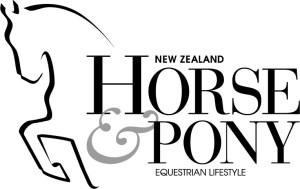 In 2016, Eventing Ireland became the first nation worldwide to use the EquiRatings Quality Index system (ERQI) – the cross-country risk analysis indictors developed by Equestrian data science company EquiRatings.
In 2016, Eventing Ireland became the first nation worldwide to use the EquiRatings Quality Index system (ERQI) – the cross-country risk analysis indictors developed by Equestrian data science company EquiRatings.
It has been interesting to see the positive results of this, and paves the way for even more use of statistics to improve the cross-country accident rate.
EquiRatings has been building ‘data footprints’, using data from every run that horses and riders have, to create individual risk profiles on every horse, at every level. Managing the horses which display disproportionate risk on their profile is proving an effective and efficient way to reduce horse falls, and has certainly worked in Ireland.
The ERQI system provided ‘traffic light’ indictors of risk for all horses at all levels in Ireland in 2016. Those which displayed ‘amber’ ERQIs were shown to have statistically higher ‘risk profiles’, and riders were strongly urged to consider competing them at a lower level until their performance was in line with the appropriate risk levels.
Horses with ‘red’ ERQIs were shown to be carrying a significant risk, and in line with the new Eventing Ireland rules, were restricted from competing at that level.
The results from the first year of the ERQI system have been significant, in particular at CNC2* level where just 1.5% of combinations were directly affected by ‘red’ ERQIs, but the level of falls decreased by 66% on the previous year.
 One of the EquiRatings directors, Diarmuid Byrne, gave a fascinating talk recently into the work he and fellow director Sam Watson are doing. E-Venting’s article gives full details on this link – well worth the read. On safety, one statistic that jumped out (excuse the pun) was a predictable pattern which comes before a fall.
One of the EquiRatings directors, Diarmuid Byrne, gave a fascinating talk recently into the work he and fellow director Sam Watson are doing. E-Venting’s article gives full details on this link – well worth the read. On safety, one statistic that jumped out (excuse the pun) was a predictable pattern which comes before a fall.
“We see a very predictable pattern, of 20, 20, RF, HF. Shocked at the amount of times you see that happen. 20, 20, HF, RF. And you also see the decisions that people make. You’ll see 20, 20, 20 at 2* and a step up to 3* and then the fall happens. So many people that aren’t able to appreciate the risk or certainly don’t appreciate the risk.”
 While statistics may make some people’s eyes glaze over, a strategic approach to the utilisation of such patterns must help prevent serious falls, injuries and deaths.
While statistics may make some people’s eyes glaze over, a strategic approach to the utilisation of such patterns must help prevent serious falls, injuries and deaths.
Of course, there is not just one solution to this and many national federations, including New Zealand’s, are working closely with officials and (especially) cross-country course builders.
Ireland now requires all Eventing Ireland Course Designers go through an accreditation system: they must either be accredited, or work under the supervision of an accredited mentor. An education day was held at Tattersalls recently with top four-star course designer Mike Etherington-Smith there to explain the process. Irish course designers will now be required to fill in a log book, detailing which tracks and courses they have produced. They will be mentored by an FEI-accredited course designer, who will ensure that the courses comply with the Eventing Ireland Cross Country Course Guidelines and will sign off the log book prior to the accreditation process.

Mike Etherington-Smith has also spent a lot of time with New Zealand course designers and has more trips planned. During his November visit, cross-country design forums were held in Auckland, as well as visits to courses at Puhinui, Woodhill Sands, Taupo National Equestrian Centre, Flaxmere and Wairarapa. Mike was back again in December leading more educational seminars at Puhinui and visited the Whangarei cross-country course.






